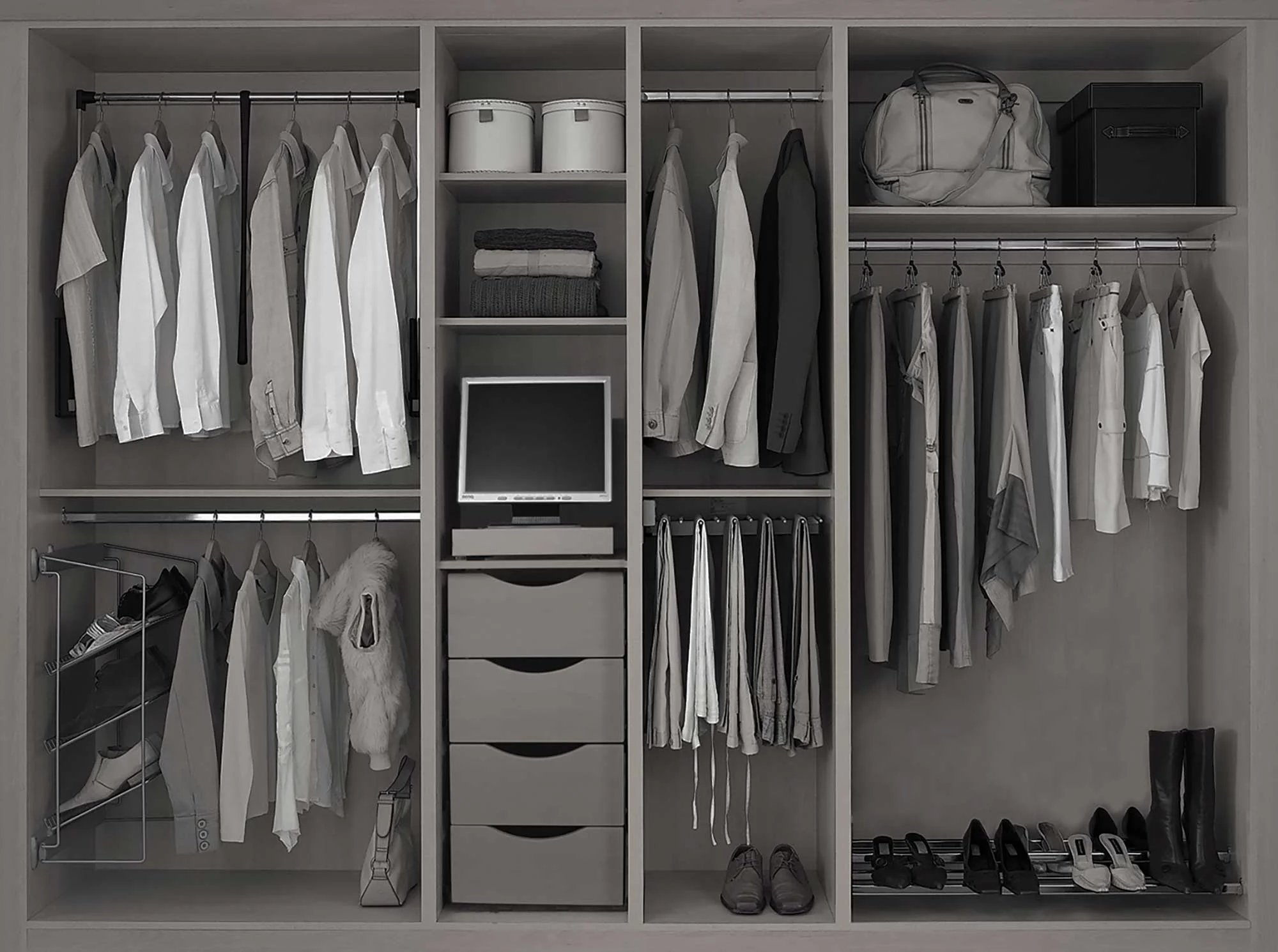Here are the tactics to properly organize and maintain your upcoming “FIT KIT” simplified wardrobe.
1. Assess your wardrobe space
The physical organization of the space for your wardrobe should basically be a layout of hanging racks, shelves, and drawers. How much space required in each compartment should be determined by you as your build your “Fit Kit”.
Save time and money. Simple, clear visual organization will save you time in the morning and prevent buying things you already own.
2. Strategy of organization
Organize by category = group like objects. Trousers with trousers, dress shirts with dress shirts, shoes with shoes, etc.. If you wish to organize by color or lightest to darkest within a category, this can be even more helpful in saving time in the future.
Keep it seasonal. Stow the winter stuff away in the spring. The stow-away process, besides freeing up space, is another purging opportunity. You will invariably find at least a few things you did not wear in the past season.
Soiled garments should be cleaned (food stains and oils from your skin in particular attract moths which will eat holes in your garments- particularly wool based items). Cedar chips help a little but physical barriers (plastic storage boxes and bags for example) are best.
No need to dry clean woolens (e.g. suits and jackets) unless they are soiled. Brush them off and hang them on a line in the sun and fresh air if possible. This helps the wool fibers to 'recover' and everything will smell fresh.
Fasten all buttons and zippers. This helps retain the shape of your clothes.
Hang as much as possible. Jackets, outerwear and pants have priority if the amount of hanging space is limited. Allow for 'breathing room' between each hanger. Circulation of air helps the clothes to recover between wearings. Do not hang sweaters and knits; they will permanently stretch out of shape and shoulders can become distorted.
Denim, khakis, shorts, tees and socks may be folded and stored on shelves or in drawers. Try keeping things folded uniformly. This will help in space optimization and visual organization. A folding board (nothing fancy) is a great way to optimize uniformity for stacking clothes.
3. Some essential tools for care and organization
Good wooden or sturdy plastic hangers with wide shoulder surface. Wire hangers can permanently damage the shoulders and should be outlawed.
Ties can be a conundrum as far as storage goes. Try quarter folding and stacking them in clear plastic stacking boxes by color.
A good clothing brush for brushing your woolens. They will look better and last longer (fewer dry cleanings necessary).
Shoes are best on a rack. Shoe trees help dry, deodorize and maintain the shape of the shoe.


